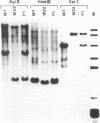Abstract
Monosomic maize (Zea mays L.) plants were generated using the r-X1 deficiency system, and the monosomy was confirmed both genetically and cytologically. Genomic DNAs prepared from a group of plants, each monosomic for one chromosome, were digested with restriction enzymes, electrophoresed in agarose gels, and blotted onto nylon membranes. Hybridization of labeled cloned DNA fragments to these blots proved efficient in assigning each fragment to the chromosome from which it originated. Cloned DNA has previously contributed to loci detection through the use of the restriction fragment length polymorphisms (RFLPs), these loci subsequently being arranged into linkage groups by segregation analysis. In this study, these linkage groups were assigned to specific chromosomes, facilitating the construction of a linkage map for maize containing 112 RFLP loci. An additional 35 loci were also assigned to chromosomes by this method; however, the linkage relationships of these loci to other RFLP loci on each chromosome remains undetermined.
Keywords: restriction fragment length polymorphism, aneuploids
Full text
PDF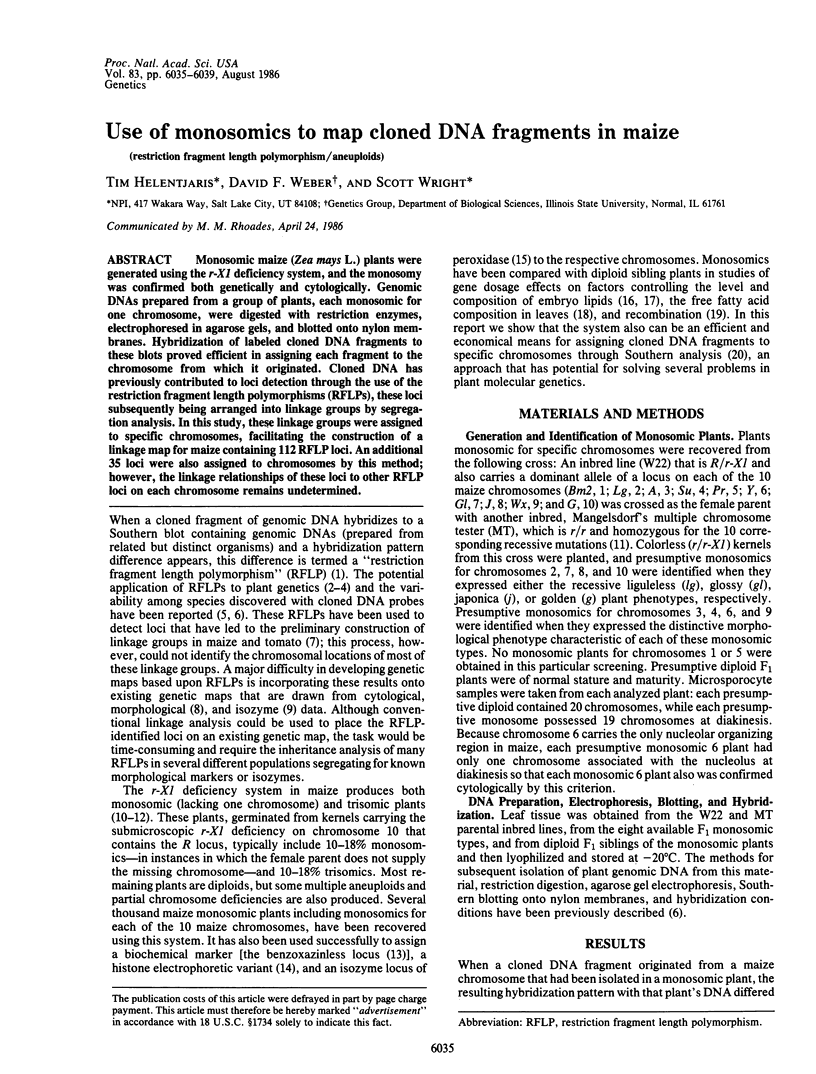
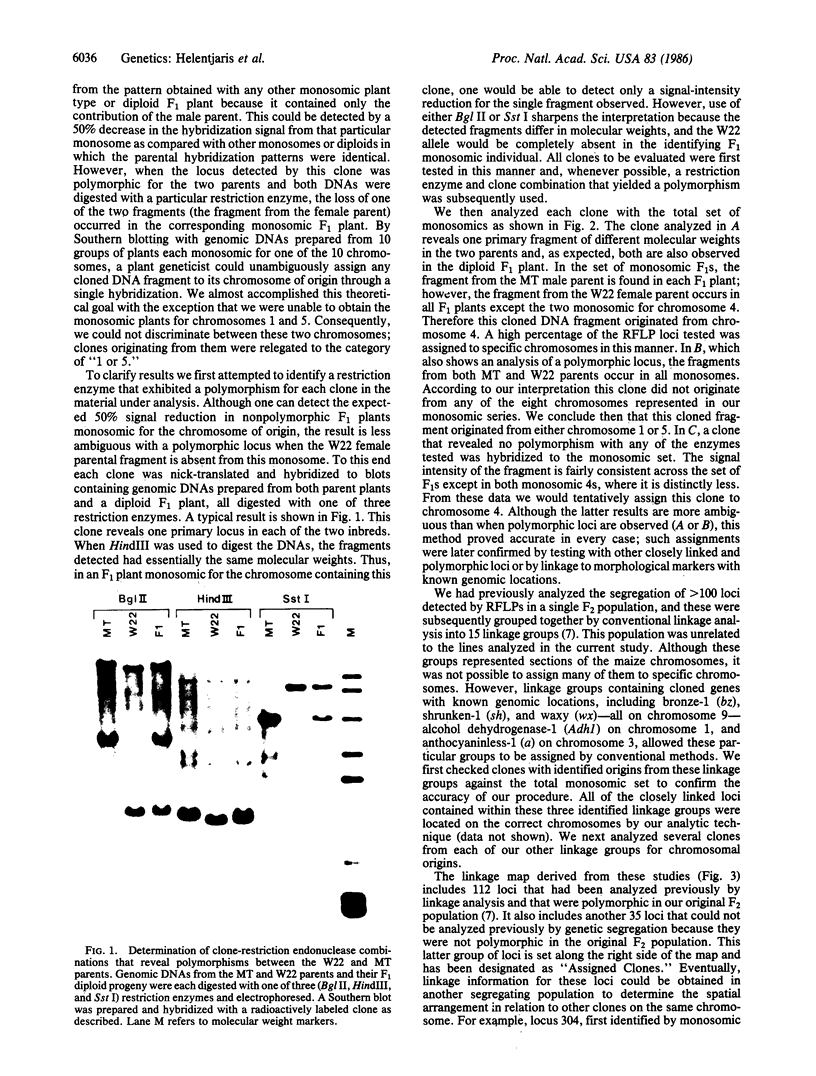
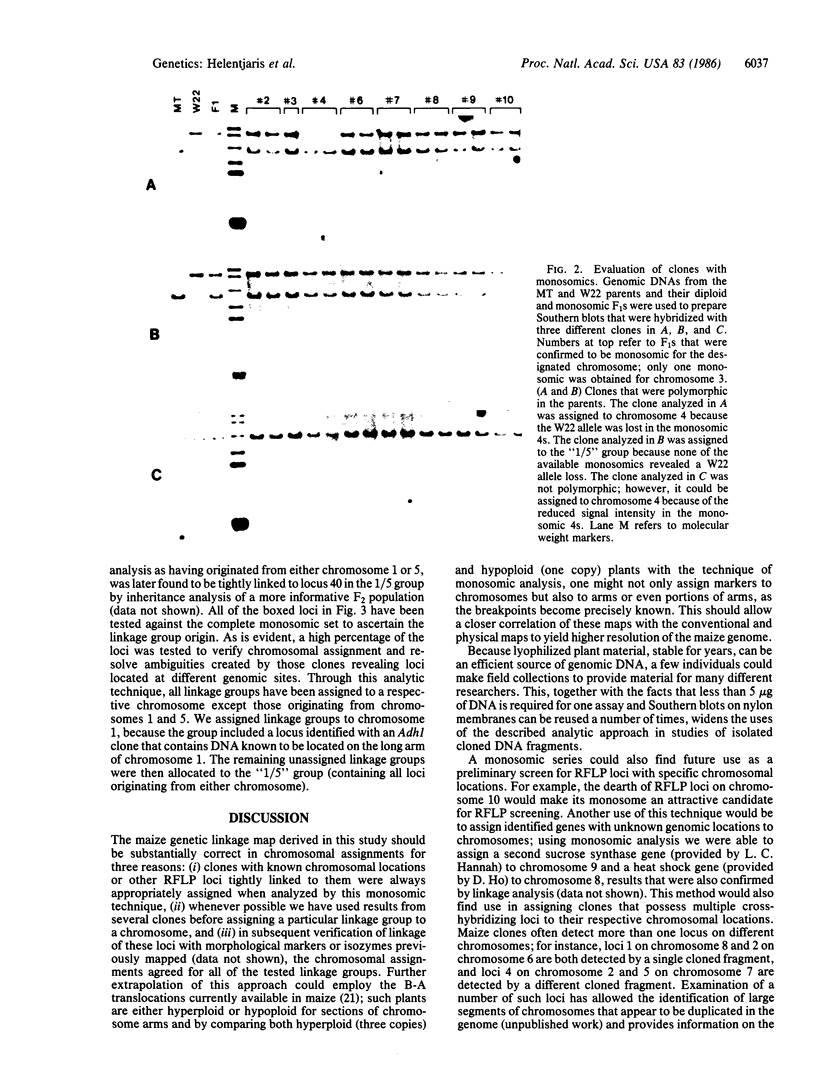
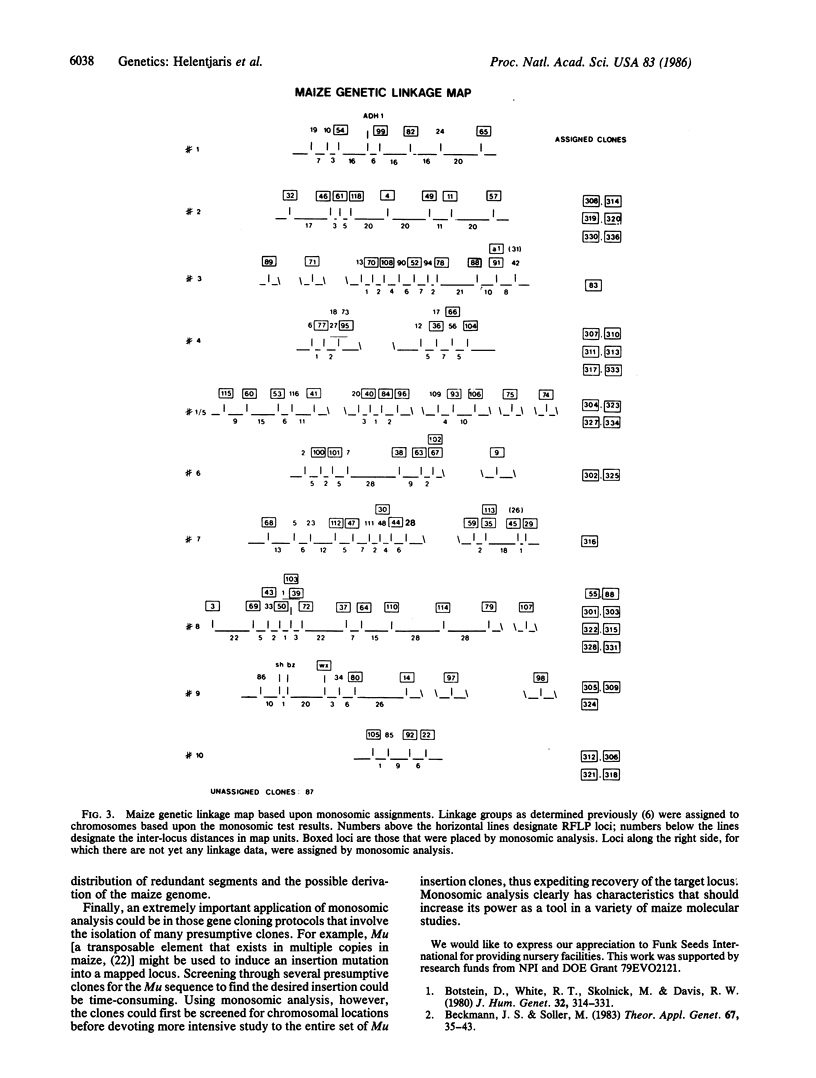
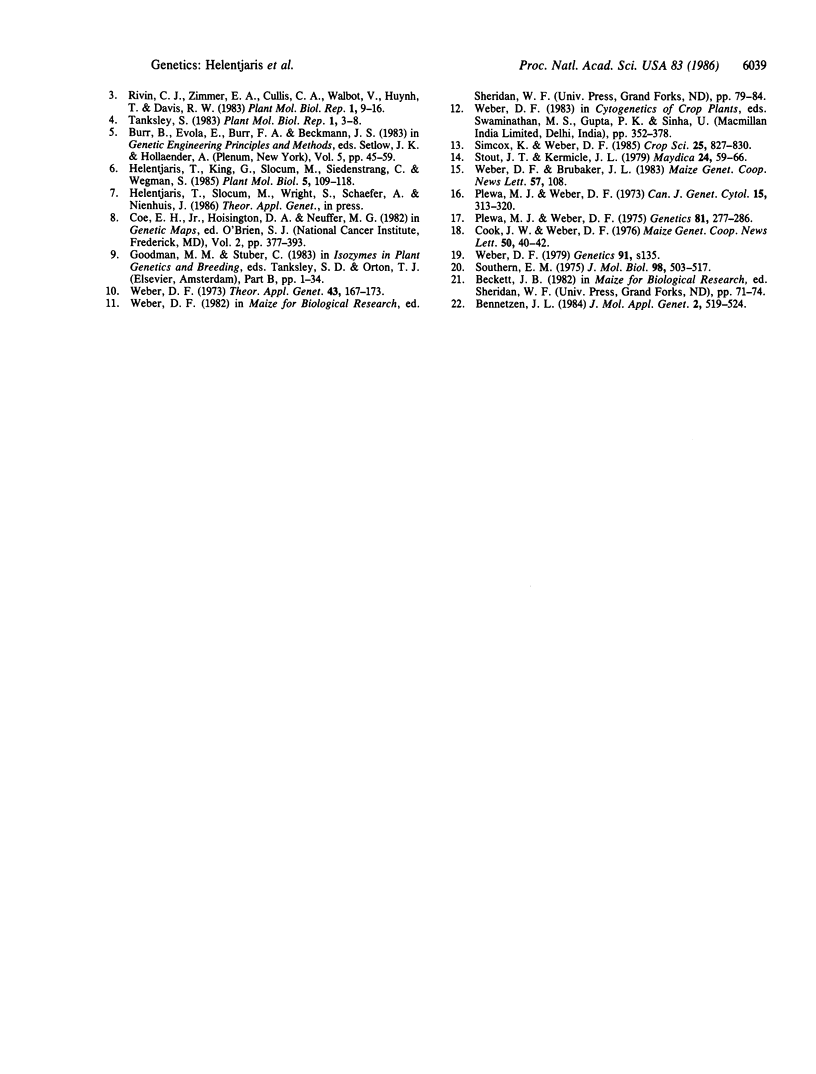
Images in this article
Selected References
These references are in PubMed. This may not be the complete list of references from this article.
- Bennetzen J. L. Transposable element Mu1 is found in multiple copies only in Robertson's Mutator maize lines. J Mol Appl Genet. 1984;2(6):519–524. [PubMed] [Google Scholar]
- Botstein D., White R. L., Skolnick M., Davis R. W. Construction of a genetic linkage map in man using restriction fragment length polymorphisms. Am J Hum Genet. 1980 May;32(3):314–331. [PMC free article] [PubMed] [Google Scholar]
- Plewa M. J., Weber D. F. Monosomic Analysis of Fatty Acid Composition in Embryo Lipids of ZEA MAYS L. Genetics. 1975 Oct;81(2):277–286. doi: 10.1093/genetics/81.2.277. [DOI] [PMC free article] [PubMed] [Google Scholar]
- Southern E. M. Detection of specific sequences among DNA fragments separated by gel electrophoresis. J Mol Biol. 1975 Nov 5;98(3):503–517. doi: 10.1016/s0022-2836(75)80083-0. [DOI] [PubMed] [Google Scholar]



